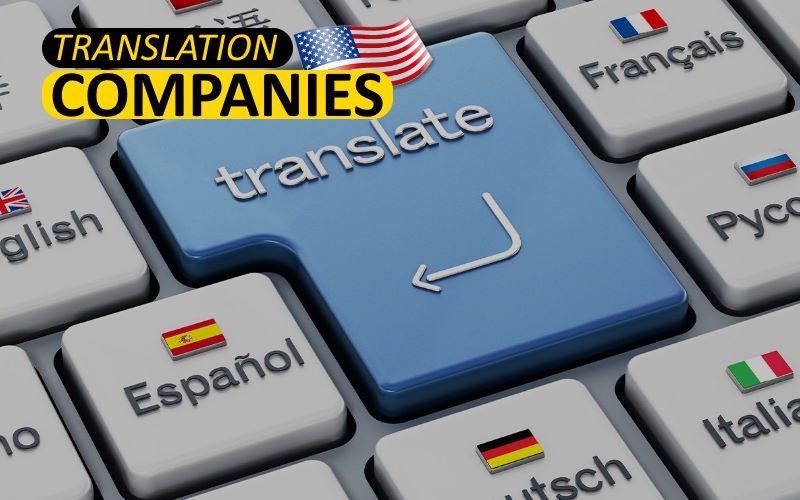Tips For How to Effectively Translate Acronyms
Translators have particular hurdles in translate acronyms since they are frequently tasked with stitching together both well-known and unusual abbreviations in a way that readers will comprehend.
While some acronyms are instantly recognized, others require the translator to provide more explanation.
The absence of universal criteria for acronym translation adds to the difficulty, but three fast ideas can help the translator’s task.
Here are tips to effectively Translate Acronyms:
1. First, take a look at the standards that were previously in use.
One of the most common problems faced by translators working with acronyms is whether the original acronym should be retained translate acronyms as written (to maintain consistency with the original language) or if it should be altered to fit the target language.
In such circumstances, it’s advisable to look at how the acronym is often used in the target language — for example, in major news outlets, journals, or other public sources.
For example, FIFA stands for Fédération Internationale de Football Association, the regulatory organization for football (or, if you prefer, “soccer”), and it is a French acronym used all over the world.
It would appear translate acronyms as the International Federation of Association Football: IFAF if translated literally into English. However, even in translation, the acronym FIFA was preserved, and it is now so widely recognized that it has remained that way.
2. Consider the Translation’s Context
Because specific acronyms are uncommon, it’s practically hard to come up with a consistent system to follow. In such circumstances, the translator must choose between sticking to the original or rearranging the letters to match the new language translate acronyms.
The reader’s comprehension is crucial while making this selection.
As a result, the context in which the acronym will be used is a consideration. Is this an article that the general public will read? Is it a legal document that specialists in a particular field will scrutinize? If the audience consists of industry specialists, they may already be familiar with some acronyms.Consider the abbreviation “GPS,” which stands for “global positioning system” in most cases. “SPM” (for “système de positionnement mondial”) may appear translate acronyms in a French translation for a wide readership. However, in a technical translation for engineers, GPS may be retained because it relates to a specific use of technology that began in English, and altering the acronym is likely to generate more significant confusion.
3. Make it a priority for the reader to understand what you’re saying.
Regardless of the path taken by translators, reader understanding is dependent on clarity and consistency. When using an acronym for the first time, it’s a good idea to write down the phrase’s complete name in the source language and, if required, the target language translate acronyms. This helps readers to interpret the acronym without trouble for more minor well-known acronym translations. The selected acronym can be used after the first reference.
more like this, just click on: https://24x7offshoring.com/blog/
Similarly, once an acronym is created, it’s critical to use it consistently throughout a document. Some translators, particularly those who work in specialized sectors, make their acronym reference guides, adding new entries as they go and checking their list of acronym translations as if it were a translation dictionary.
A translate acronyms most valuable resource is sometimes the person or corporation who requested the translation in the first place. For example, if a customer wants an acronym to appear in a translation, they should tell the language services provider right away. This saves time and ensures consistency by providing translators with the information they require right away.
4. LSP (Language Service Provider) is an acronym for Language Service Provider.
A language service provider is a business that provides translation and linguistic services. Translation, localization, interpretation, testing, staffing, marketing, and other services vary depending on the firm translate acronyms.
As a content services provider, Top-quality Lionbridge can contribute value at each stage of your company’s content journey, from content generation through translation and beyond.
5. SLV stands for Single-Language Vendor.
A single-language vendor specializes in a single language combination and provides translation and linguistic services in that language combination. SLVs can function on their own or as part of a bigger LSP.
6. MLV stands for Multi-Language Vendor.
Translation and linguistic services in various languages are provided by multi-language suppliers. Lionbridge is an example of a multi-language vendor (MLV) that offers benefits beyond translate acronyms.
7. SL/TL stands for “Source Language” and “Target Language.”
A source language is a language in which original material is created, while a target language is a language into which that information is translated by a translator.

8. MT stands for Machine Translation.
Machine translation is a type of automated translation that is powered by artificial intelligence. It is one of the most potent tools LSPs have for delivering high-quality translations more efficiently since it depends on computers to make translations faster.
9. TMS (Translation Management System) is an acronym for Translation Management System.
LSPs employ a translate acronyms Management System (TMS) to automate the translation process and avoid repetitive human activities.
10. TM stands for Translation Memory.
A translation memory is a database of translations that may be customized. LSPs use a TM to store definitions of recurrent text segments, which enhances translation performance and consistency for a specific client.
11. Over-the-Phone Interpretation (OPI)
Over-the-phone interpretation is precisely what it sounds like: a service that connects a speaker of one language to a speaker of another translate acronyms by having an interpreter accompany them on their phone conversation. Our OPIs at Lionbridge are multilingual specialists that are available around the clock at a low fee.
12. CMS stands for “Content Management System.”
A content management system (CMS) is a platform that allows businesses to generate, manage, and alter digital material. When choosing a CMS, global companies should look for one that can interact with translation and localization services, allowing them to translate and localize content and connect with international clients swiftly translate acronyms.
Continue Reading, just click on: https://24x7offshoring.com/blog/



 Afrikaans
Afrikaans Albanian
Albanian Amharic
Amharic Arabic
Arabic Armenian
Armenian Azerbaijani
Azerbaijani Basque
Basque Belarusian
Belarusian Bengali
Bengali Bosnian
Bosnian Bulgarian
Bulgarian Catalan
Catalan Cebuano
Cebuano Chichewa
Chichewa Chinese (Simplified)
Chinese (Simplified) Chinese (Traditional)
Chinese (Traditional) Corsican
Corsican Croatian
Croatian Czech
Czech Danish
Danish Dutch
Dutch English
English Esperanto
Esperanto Estonian
Estonian Filipino
Filipino Finnish
Finnish French
French Frisian
Frisian Galician
Galician Georgian
Georgian German
German Greek
Greek Gujarati
Gujarati Haitian Creole
Haitian Creole Hausa
Hausa Hawaiian
Hawaiian Hebrew
Hebrew Hindi
Hindi Hmong
Hmong Hungarian
Hungarian Icelandic
Icelandic Igbo
Igbo Indonesian
Indonesian Irish
Irish Italian
Italian Japanese
Japanese Javanese
Javanese Kannada
Kannada Kazakh
Kazakh Khmer
Khmer Korean
Korean Kurdish (Kurmanji)
Kurdish (Kurmanji) Kyrgyz
Kyrgyz Lao
Lao Latin
Latin Latvian
Latvian Lithuanian
Lithuanian Luxembourgish
Luxembourgish Macedonian
Macedonian Malagasy
Malagasy Malay
Malay Malayalam
Malayalam Maltese
Maltese Maori
Maori Marathi
Marathi Mongolian
Mongolian Myanmar (Burmese)
Myanmar (Burmese) Nepali
Nepali Norwegian
Norwegian Pashto
Pashto Persian
Persian Portuguese
Portuguese Punjabi
Punjabi Romanian
Romanian Russian
Russian Polish
Polish Samoan
Samoan Scottish Gaelic
Scottish Gaelic Serbian
Serbian Sesotho
Sesotho Shona
Shona Sindhi
Sindhi Sinhala
Sinhala Slovak
Slovak Slovenian
Slovenian Somali
Somali Spanish
Spanish Sundanese
Sundanese Swahili
Swahili Swedish
Swedish Tamil
Tamil Tajik
Tajik Telugu
Telugu Turkish
Turkish Ukrainian
Ukrainian Urdu
Urdu Uzbek
Uzbek Thai
Thai Vietnamese
Vietnamese Welsh
Welsh Xhosa
Xhosa Yiddish
Yiddish Yoruba
Yoruba Zulu
Zulu